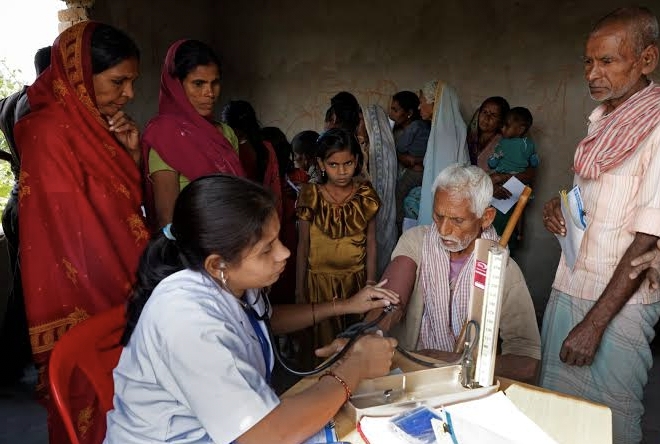New Delhi: There is a huge shortage of specialist doctors in villages across the country, including Punjab, Haryana and Himachal Pradesh, due to which health services in rural areas are being badly affected.
According to data from the central government, there are currently 79.5 per cent shortage of specialist doctors in the villages of the country and this shortage is the biggest ever.
According to the data received, 21,920 specialist doctors are required in the villages of India, but there are currently 4485 doctors posted in these villages and 17,435 specialist doctors are less. There is a need for 600 specialist doctors in the villages of Punjab, while there are only 151 doctors here.
In this way, 449 more specialist doctors are needed here. Similarly, in Haryana, there is a requirement of 516 specialist doctors, but there are only 33. In Himachal Pradesh, the requirement is 372, but there are 18 specialist doctors here.
According to data from the central government, up to 80 per cent of the specialist doctors in the community health centers in india’s rural areas are scarce. Surgeons are 83.2 per cent less, gynaecologists and gynaecologists 74.2 per cent, paediatricians 81.6 per cent and medicine specialists 79.1 per cent less than the current infrastructure requirement, the data showed.
This reduction constitutes 79.5 per cent of the total requirement. This simply means that there are only two health centres where 10 specialist doctors are required. There are currently 6,064 community health centres across the country, of which 5,480 are in rural areas and 584 in urban areas.
According to the National Health Mission (NHM) norms, a health centre in the plains has 1.2 lakh people and a health centre in mountainous and far-flung areas has 80,000 people.
According to the rules, a health centre requires at least four health specialists (surgeons, medicine, obstetricians/gynaecologists and paediatricians) besides paramedical and other staff. Along with health experts, there is also a reduction of 3.6 per cent of women health workers and ANMs and 66.6 per cent of male health workers in rural sub-centres.
This shortage of labour force at the national level is due to the shortage of safat in Uttar Pradesh, Himachal Pradesh, Gujarat, Uttarakhand, Odisha and Tripura. Primary health centres, which are the first link of communication between the rural population and the medical officer, have a shortage of health assistants by 74.2 per cent.
There is a shortage of up to 3.1 per cent of allopathic doctors in primary health centres across the country and the biggest shortage is in Odisha, Chhattisgarh and Karnataka.
At present, there are 1,57,935 sub-centres, 24,935 primary health centres and 5,480 community health centres in villages in India. A primary health centre has 30,000 people in the plains and 20,000 in mountainous areas, while a sub-centre has a responsibility of 5,000 and 3,000 people, respectively.


